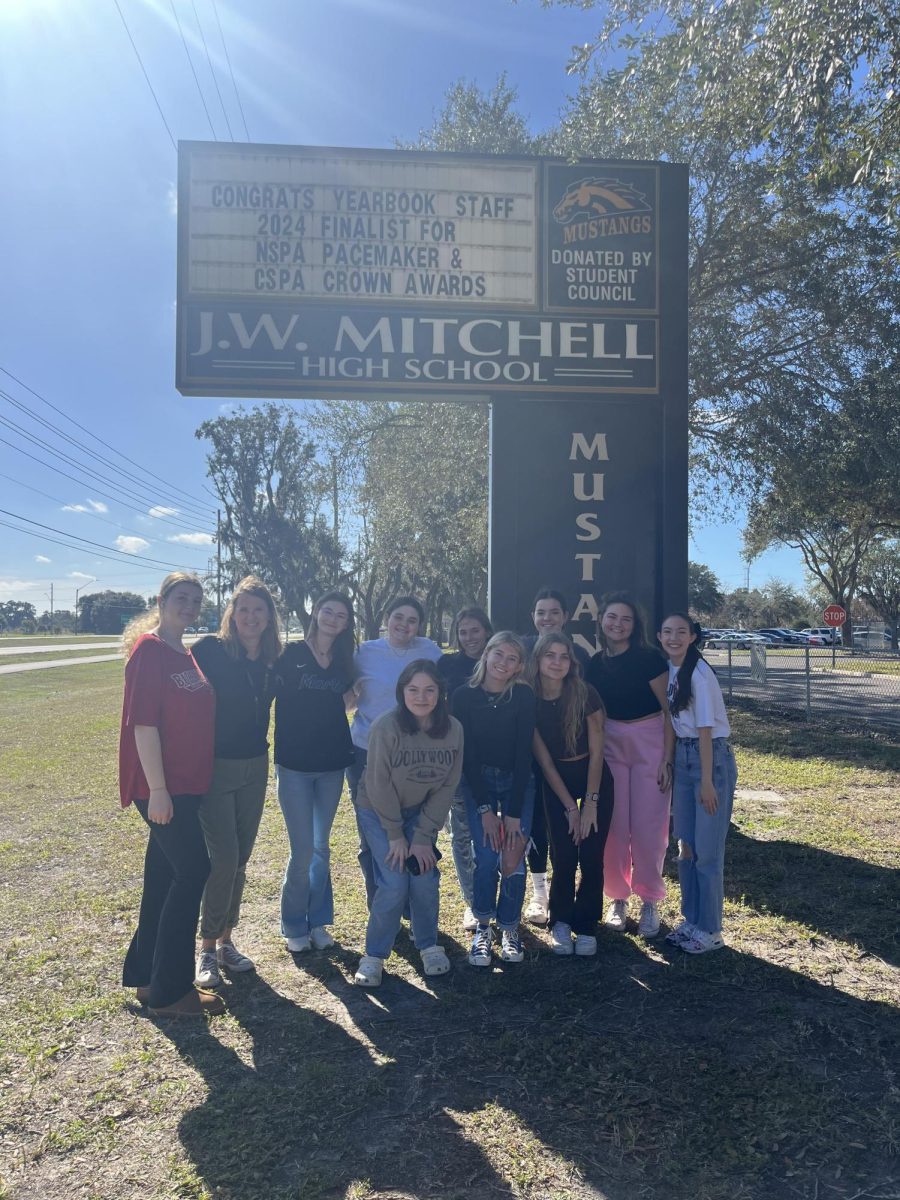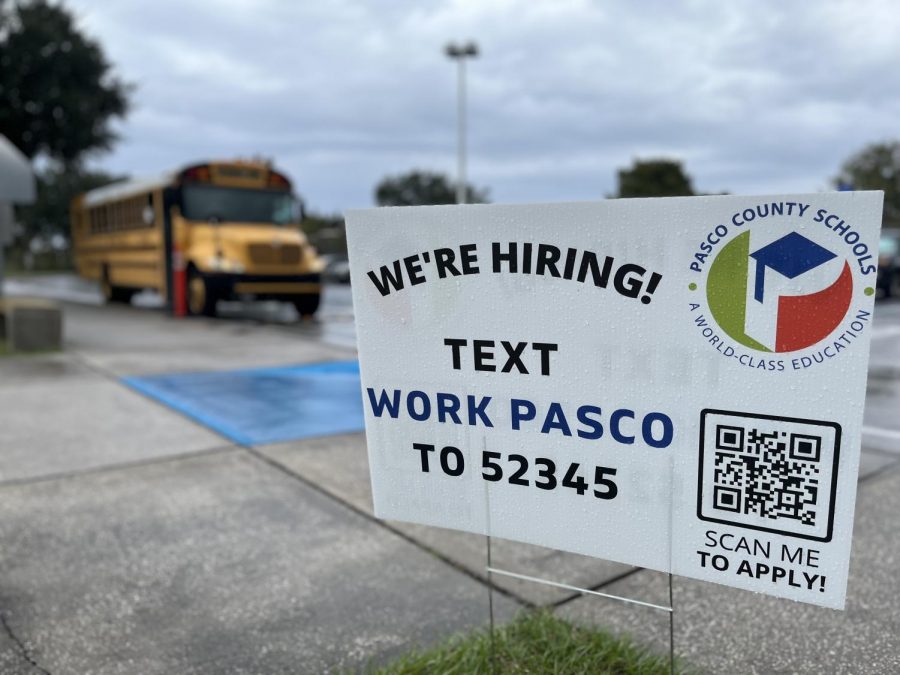The Staffing Dilemma
Schools, along with other companies around the globe, struggle with understaffing within the workplace.
October 25, 2021
At the conclusion of a rather trying year for most, the job market prepares for the flood of new mothers, educators, and a whole generation eligible to enter the workforce. Managers are expecting to hire top-talent to bring innovative strategies and big smiles on their faces to sink back to normal in 2021—or so they think.
Pasco County, home to more than 500,000 residents, represents one of many communities at the forefront of “The Great Resignation,” also known as the “Big Quit.” Americans are rapidly abandoning their jobs to pursue other passions, leaving approximately 4 million jobs vacant, according to the Bureau of Labor Statistics. The Pasco County School District alone lacks 155 instructional and 348 non-instructional positions, the latter including more than 100 bus driver vacancies, public information officer Steve Hegarty told The Laker/ Lutz News. Even with the creation and funding of more jobs, roles continue to be understaffed.
“Grants that were supposed to provide for more nurses to help with contact tracing — people are not taking these jobs. It is stretching our folks too thin,” school board member, Collen Beaudoin said at the school board meeting on Sept. 14.
In addition to schools, this problem impacts other industries, such as local law enforcement, healthcare, and even retail workers. Florida is responsible for 20% of COVID-19 cases in the most recent months and 13% of medical facilities are reported to be understaffed, as stated by the U.S. Department of Health and Human Services. Similarly, the police experience increasingly fewer applicants to their departments and higher turnover rates. This makes it dramatically more difficult, especially in growing counties, to meet all the safety needs of residents. Despite the clear “help wanted” signs posted on nearly every institution, no one seems to take an interest.
From understaffed medical providers struggling to supply optimal care for their patients, to children piled on top of each other as bus drivers complete their double runs, labor shortages in the United States alone manifest into a larger projected issue that begs the question: Why are so many people abandoning their jobs?
While the answer is not as simple, a large portion of the issue can be attributed to low pay and lack of benefits and flexibility within jobs, compared to the level of stress workers are faced with. The pandemic acted as the turning point for many people evaluating their careers well before COVID-19. The inability to work during the lockdown opened the eyes of many to reexamine their priorities, heightening the expectations to which a company is held.
Providing one-time financial incentives to entice employees to apply for a position has been the solution of many organizations. However, unless they offer sustainable living wages, bonuses alone will not ensure long-term employment.
Companies need to invest in their present and future employees, by offering flexible scheduling and increased pay, especially in times of need. Big corporations must provide a safe workplace culture that promotes diversity and benefits all team members, shifting to a more personalized relationship with their more than dedicated workers. In the simplest terms, employees need to be treated with the respect and decency all humans are entitled to have.
The staffing shortage is a response to the inevitable reevaluation of how the workforce is treated by the government and corporate America. People’s decisions to step down from their positions, or not to enter the workforce at all, is a result of the failure to recognize the needs of workers. Redefining the way companies value their workers will lead to the progression of an ethical and prosperous society.

















![Colin McRaven ('24) prepares to pitch the ball to an Anclote batter during the Varsity pre-season game."I like striking people out, since it's fun. The game against Anclote was pretty easy because they were less talented than our team and [I think] we were better than them in every aspect," Colin McRaven ('24) said.](https://jwmhshoofbeat.com/wp-content/uploads/2024/03/IMG_1538-1200x928.jpg)







![Meryam Ghobrial’s (’27) Spotify Wrapped provided "genre" for the month of April. “Some other people got the same [AI generated] genre name for different artists of the same genre” Ghobrial said. Photo provided by Meryam Ghobrial.](https://jwmhshoofbeat.com/wp-content/uploads/2025/02/unnamed-555x1200.png)





